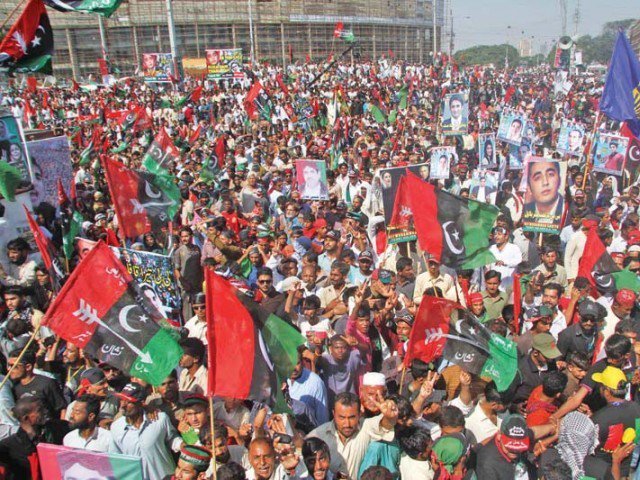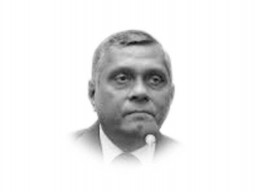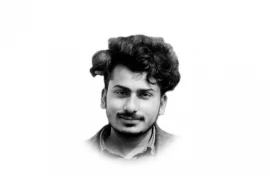
Politics itself is reflection of the socio-economic landscape. Family-based politics is thriving because families are thriving as basic social and economic units. Not just the nucleus family; husband, wife and kids but the extended family, and the extension of the extended family. The clan, tribes and biradri , and eventually community and the ethnicity. Biradri-based politics will only go away once biradris will go away. Till then we will have to live with the Jat, Gujjar, Kashmiri and Arain networks which are the supply lines of the dynasty-based politics. A close look at our economic landscape shows the same clannish trend. From the markets of Faisalabad to the shores of Karachi, few families dominate trade and commerce.
PPP will not accept ‘censored, puppet democracy’, says Bilawal
The local corporate sector is no better with hardly any ownership or place on board outside family. The competitive sectors like lawyers and doctors show the same trend. The Supreme Court Bart Association, the elite body of lawyers, has around 3,000 lawyers. A close look and some discussion with any senior members will reveal that the majority are either second generation or even third generation lawyers and even if the first one, the next generation is most likely to be the torchbearer. A closer look at the bench, ie, superior judiciary will also predictably show the same trend as most of the members of bench are drawn from the bar. The armed forces and civil service though highly competitive are not immune from family linkages and even if not part of any networks initially, many new entrants especially in civil service are later included in existing family linkages.
Political parties’ organisational structure is the main reason for the survival of families. Almost all political parties in Pakistan and a majority in neighbouring India are what we can call as founder parties. A founder party is a party which sustains around the personality and ideology of its leader. In Pakistan, every major political party is a founder-based party ranging from secular parties like the PPP and the ANP to religious ones like the JUI-F. The Jamaat-e-Islami is a minor exception but it is also organised around the ideology of Maualana Maudoodi though instead of family, the reliance is on intellectual disciples. The MQM is also a founder party and now going through the transition to get a new leader. The founder of the party creates a political capital consisting of ideology, constituency and legitimacy. That political capital can only be successfully transferred through the first family. This is true for parties in Pakistan and for most parties in India except for perhaps the BJP and the Communist Party of India (Marxist). When the joint opposition stood behind Mohtarma Fatima Jinnah, they were just trying to capitalise on the political capital of the Quaid-e-Azam. The Congress was more successful though and thrice, starting from Indira and then Rajiv and finally Sonia Gandhi.
Influential political families drifting away from PPP
The common misperception is that political parties are absolutely and unilaterally ruled by these first families. In fact the relationship is two-way and mutually dependent. Below the first families, there are a number of second-tier families and below that third and fourth tier and finally down to the street or mohallah level. The contest within families is also fierce. The first tier families of 1947; the Mamdots, Tiwanas, Hayats and Rajas have been replaced by Bhuttos then not in the first tier and new entrants like Sharifs and Chaudharies. The success of first family depends on maximising the number of second-tier families who contribute their own strength into party and form the pool of electables , so despised yet so needed. The competition condition of representative democracy can said to be met with the voting out of old families and election of new ones.
Kanchan Chandra , a US-based political scientist in her edited book Democratic Dynasties ; State, Party and Family in contemporary Indian Politics, has analysed the extent and causes of dynastic politics in India. She attributes sustenance of the phenomenon to the cohesiveness ensured by sticking with family instead of individual and the patronage benefits attached with a political office. First deals with the structure of parties and second with that of state. In our case, family-oriented politics also stems from risk minimising as well as division of labour. A candidate ensures that his constituency remains intact in case of contingency which can be anything ranging from death to disqualification. South Asia is not the only region dominated by dynasties. The Philippines has 50 per cent of legislators from political families and even in countries like Japan, Iceland and Ireland, almost a third/fourth of legislators in 2009 were dynastic.
Political dynasties are thus a product of democracy itself and do not seem to be going away any time soon. Their prevalence is a violation of merit and competence as they restrict entry into politics and the best and most competent are not elected as representatives. But this family-tiered structure also operates as a check on fascist tendencies as is seen in many parts of the world. They will survive as long as the political parties remain founder-based and the political capital is transferred only through the first family who attain representative legitimacy as sole custodian of that political capital. The ideal of Canada, ie, 3% dynastic incidence will happen only after the role of state is itself redesigned, from the patronage giver to an enabler and regulator, thus making the state office less attractive and more responsible.
Published in The Express Tribune, June 24th, 2018.
Like Opinion & Editorial on Facebook, follow @ETOpEd on Twitter to receive all updates on all our daily pieces.
1736930668-0/Untitled-design-(97)1736930668-0-405x300.webp)
1736931444-0/BeFunky-collage-(51)1736931444-0-165x106.webp)

1736929668-0/Untitled-design-(96)1736929668-0-165x106.webp)







1732012115-0/Untitled-design-(14)1732012115-0-270x192.webp)
1736844405-0/Express-Tribune-(2)1736844405-0-270x192.webp)






COMMENTS
Comments are moderated and generally will be posted if they are on-topic and not abusive.
For more information, please see our Comments FAQ